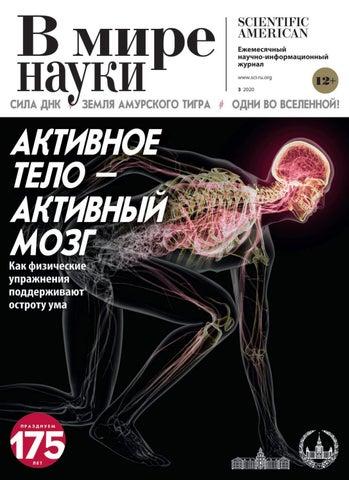
Digital technology is a little closer to biology, DNA and the brain
Content
Elon Musk assures that in the near future people will be able to create a full-fledged brain-computer interface. In the meantime, we hear from time to time about his experiments on animals, first on pigs, and more recently on monkeys. The idea that Musk will get his way and be able to implant a communication terminal in a person’s head fascinates some, scares others.
He is not only working on a new Musk. Scientists from the UK, Switzerland, Germany and Italy recently announced the results of a project that has combined artificial neurons with natural (one). All this is done over the Internet, which allows biological and "silicon" neurons to communicate with each other. The experiment involved growing neurons in rats, which were then used for signaling. Group leader Stefano Vassanelli reported that scientists for the first time managed to show that artificial neurons placed on a chip can be directly connected with biological ones.
Researchers want to take advantage artificial neural networks restore the proper functioning of damaged areas of the brain. After being inserted into a special implant, the neurons will act as a kind of prosthesis that will adapt to the natural conditions of the brain. You can read more about the project itself in an article in Scientific Reports.
Facebook wants to get into your brain
Those who are afraid of such new technology may be right, especially when we hear that, for example, we would like to choose the "content" of our brain. At an event held in October 2019 by the Facebook-backed research center Chan Zuckerberg BioHub, he talked about hopes for brain-controlled portable devices that would replace the mouse and keyboard. “The goal is to be able to control objects in virtual or augmented reality with your thoughts,” said Zuckerberg, quoted by CNBC. Facebook bought CTRL-labs, a startup that develops brain-computer interface systems, for almost a billion dollars.
Work on the brain-computer interface was first announced at the Facebook F8 conference in 2017. According to the company's long-term plan, one day non-invasive wearable devices will allow users to write words just by thinking them. But this kind of technology is still at a very early stage, especially since we're talking about touchscreen, non-invasive interfaces. “Their ability to translate what is happening in the brain into motor activity is limited. For great opportunities, something needs to be implanted,” Zuckerberg said at the aforementioned meeting.
Will people allow themselves to "implant something" to connect with people known for their unbridled appetite for private data from facebook? (2) Perhaps such people will be found, especially when he offers them cuts of articles that they do not want to read. In December 2020, Facebook told employees it was working on a tool to summarize information so users don't have to read it. At the same meeting, he presented further plans for a neural sensor to detect human thoughts and translate them into actions on the website.
2. The brain and interfaces of Facebook
What are brain-efficient computers made of?
These projects are not the only efforts to be created. The mere connection of these worlds is not the only goal pursued. There are, for example. neuromorphic engineering, a trend aimed at recreating the capabilities of machines human brain, for example, in terms of its energy efficiency.
It is predicted that by 2040, global energy resources will not be able to meet our computing needs if we stick to silicon technologies. Therefore, there is an urgent need to develop new systems that can process data faster and, most importantly, more energy efficiently. Scientists have long known that mimicry techniques may be one way to achieve this goal. human brain.
W silicon computers different functions are performed by different physical objects, which increases the processing time and causes huge heat losses. In contrast, neurons in the brain can simultaneously send and receive information over a vast network at ten times the voltage of our most advanced computers.
The main advantage of the brain over its silicon counterparts is its ability to process data in parallel. Each of the neurons is connected to thousands of others, and all of them can act as inputs and outputs for data. To be able to store and process information, as we do, it is necessary to develop physical materials that can quickly and smoothly transition from a state of conduction to a state of unpredictability, as is the case with neurons.
A few months ago, an article was published in the journal Matter about the study of a material with such properties. Scientists at Texas A&M University have created nanowires from the compound symbol β'-CuXV2O5 that demonstrate the ability to oscillate between states of conduction in response to changes in temperature, voltage, and current.
Upon closer examination, it was found that this ability is due to the movement of copper ions throughout β'-CuxV2O5, which causes electron movement and changes the conductive properties of the material. To control this phenomenon, an electrical impulse is generated in β'-CuxV2O5, very similar to the one that occurs when biological neurons send signals to each other. Our brain functions by firing certain neurons at key times in a unique sequence. A sequence of neural events leads to the processing of information, whether it be recalling a memory or performing a physical activity. The scheme with β'-CuxV2O5 will work the same way.
Hard drive in DNA
Another area of research is research based on biology. data storage methods. One of the ideas, which we have also described many times in MT, is the following. data storage in DNA, is considered a promising, extremely compact and stable storage medium (3). Among others, there are solutions that allow storing data in the genomes of living cells.
By 2025, it is estimated that almost five hundred exabytes of data will be produced every day worldwide. Storing them can quickly become impractical to use. traditional silicon technology. The information density in DNA is potentially millions of times higher than that of conventional hard drives. It is estimated that one gram of DNA can contain up to 215 million gigabytes. It is also very stable when stored properly. In 2017, scientists extracted the complete genome of an extinct horse species that lived 700 years ago, and last year, DNA was read from a mammoth that lived a million years ago.
The main difficulty is to find a way compound digital world i data with the biochemical world of genes. It is currently about DNA synthesis in the lab, and although costs are dropping rapidly, it is still a difficult and costly task. Once synthesized, sequences must be carefully stored in vitro until they are ready for reuse or can be introduced into living cells using CRISPR gene editing technology.
Columbia University researchers have demonstrated a new approach that allows direct conversion digital electronic signals into the genetic data stored in the genomes of living cells. “Imagine cellular hard drives that can compute and physically reconfigure in real time,” said Harris Wang, one of the Singularity Hub team members. "We believe the first step is being able to directly encode binary data into cells without the need for in vitro DNA synthesis."
The work is based on a CRISPR-based cell recorder, which Van previously developed for E. coli bacteria, which detects the presence of certain DNA sequences inside the cell and records this signal in the organism's genome. The system has a DNA-based "sensor module" that responds to certain biological signals. Wang and his colleagues adapted the sensor module to work with a biosensor developed by another team, which in turn responds to electrical signals. Ultimately, this allowed the researchers direct coding of digital information in the bacterial genome. The amount of data that one cell can store is quite small, only three bits.
So the scientists found a way to encode 24 distinct bacterial populations with different 3-bit pieces of data at the same time, for a total of 72 bits. They used it to encode "Hello world!" messages. in bacteria. and showed that by ordering the pooled population and using a specially designed classifier, they could read the message with 98 percent accuracy.
Obviously, 72 bits is far from capacity. mass storage modern hard drives. However, scientists believe that the solution can be quickly scaled. Storing data in cells it is, according to scientists, much cheaper than other methods coding in genesbecause you can just grow more cells instead of going through complicated artificial DNA synthesis. Cells also have a natural ability to protect DNA from environmental damage. They demonstrated this by adding E. coli cells to unsterilized potting soil and then reliably extracting the entire 52-bit message from them by sequencing the soil's associated microbial community. Scientists have also begun to design the DNA of cells so that they can perform logical and memory operations.
4. Vision of the transhumanist singularity as the next stage of evolution
integration computer technician i Telecommunications it is strongly associated with notions of a transhumanist "singularity" predicted by other futurists as well (4). Brain-machine interfaces, synthetic neurons, storage of genomic data - all this can develop in this direction. There is only one problem - these are all the methods and experiments at the very early stage of research. So those who fear this future should rest in peace, and the enthusiasts of human-machine integration should cool off.

